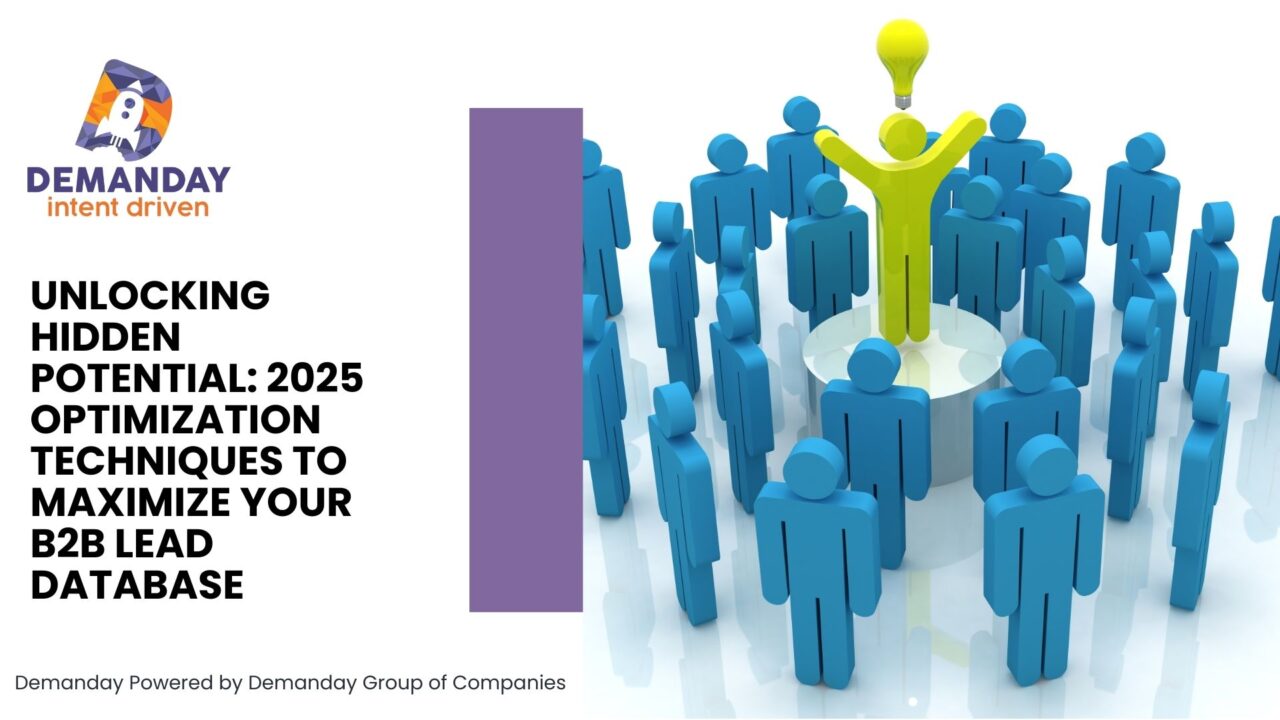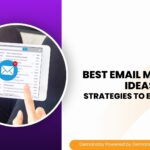Unlocking Hidden Potential: 2025 Optimization Techniques to Maximize Your B2B Lead Database
As a business owner or marketer navigating the fast-paced world of B2B relationships, you understand the importance of a robust lead database. But how often do you tap into the true value of that database? With the landscape of B2B marketing continually evolving, knowing how to optimize your lead database in 2025 is more crucial than ever. In this article, we’ll explore the most effective techniques to enhance your B2B lead database, enabling you to drive growth, improve conversions, and ultimately, achieve your business objectives.
Understand the Changing Landscape of B2B Marketing
Before we dive into optimization techniques, it’s essential to recognize how B2B marketing has evolved in recent years. According to recent statistics, the demand for personalized communication is at an all-time high, with 73% of B2B decision-makers citing continued personalization as a critical factor influencing their purchasing decisions in 2024
Additionally, 66% of B2B companies plan to increase their investment in data analytics and lead nurturing over the next year These patterns suggest that lead collection alone is insufficient. You need to adapt your approach to meet these changes head-on.
1. Segment Your Database for Targeted Outreach
One of the most effective techniques you can utilize in 2025 to optimize your B2B lead database is segmentation. You can customize your marketing and outreach tactics by grouping your contacts into relevant categories according to behavior, industry, or prospective value.
How to Do It:
- Categorize Leads: Group potential clients based on company size, budget, location, or previous interactions with your brand.
- Create Personas: Develop lead personas that outline their pain points, interests, and motivations.
- Utilize Automation Tools: Platforms like HubSpot or Zoho help automate segmentation, enabling targeted communications based on lead behavior.
By employing segmentation, you’ll ensure that your messages hit home, fostering stronger connections and facilitating higher conversion rates.
2. Leverage AI Technologies
AI is transforming the B2B landscape, providing tools that allow you to analyze your lead database in ways you may not have thought possible. In 2025, incorporating AI into your strategy can yield better insights and improved efficiency.
How to Do It:
- Predictive analytics: Programs such as Salesforce Einstein can forecast which leads will most likely convert by analyzing past data.
- Chatbots: These AI-driven tools can engage with leads in real time, answering queries and capturing information, thus enriching your database.
- Lead Scoring: Use AI algorithms to assign scores to leads based on their interaction with your brand, allowing you to prioritize your outreach efforts effectively.
Integrating AI into your processes means you’re not just staying relevant; you’re gaining a competitive edge.
3. Data Hygiene: Keep Your Database Clean
The correctness of the data in your lead database determines its value. In 2025, maintaining data hygiene will be an essential aspect of optimizing your lead database. Research shows that poor data quality is costing businesses up to 30% of revenue
How to Do It:
- Regular Updates: Schedule routine audits and clean-ups to remove duplicates, correct inaccuracies, and update outdated information.
- Use Verification Tools: Platforms such as NeverBounce or ZeroBounce can help validate email addresses and maintain the integrity of your contact list.
- Encourage Accurate Input: When capturing new leads, make it easy for them to provide accurate information by minimizing the number of required fields on forms.
4. Implementing Multi-Channel Strategies
Your leads are likely present across various channels, from social media platforms to email and webinars. Employing a multi-channel approach in 2025 is vital for maximizing engagement and conversions.
How to Do It:
- Social Media Engagement: Leverage platforms like LinkedIn for personalized outreach and interaction with your leads. Share valuable content to establish authority and gain trust.
- Email Campaigns: Craft tailored email campaigns based on the preferences and behaviors of your segmented leads.
- Webinars and Live Events: Host webinars on industry-related topics to draw in potential clients while nurturing existing leads.
The goal is to meet your leads where they are and provide consistent messaging across channels to nurture relationships.
5. Aligning Sales and Marketing Teams
An aligned sales and marketing team is critical to optimizing your lead database. Studies show that companies with synchronized marketing and sales have over 38% higher sales win rates and 36% greater customer retention
How to Do It:
- Regular Communication: Schedule meetings between teams to discuss lead quality, new insights, and strategies.
- Shared Goal Setting: Establish benchmarks that both teams can focus on achieving, fostering collaborative efforts in lead nurturing.
- Utilize CRM Tools: With a shared CRM platform, both teams can access crucial information about leads, ensuring everyone is on the same page.
By breaking silos, you create a seamless experience for your leads, resulting in higher conversion rates and long-term relationships.
The Future Awaits
In 2025, tapping into the true value of your B2B lead database is not just about data collection—it’s about optimizing and refining your approach. By segmenting your leads, leveraging AI technologies, ensuring data hygiene, implementing multi-channel strategies, and aligning your sales and marketing teams, you can unlock superior growth potential for your business.
The statistics and trends show that adapting to the ever-changing landscape of B2B marketing is vital. So, take that first step today! Embrace these optimization techniques and watch your lead database become one of your most valuable assets. It’s time to harness the full potential of your database and transform leads into loyal customers.



